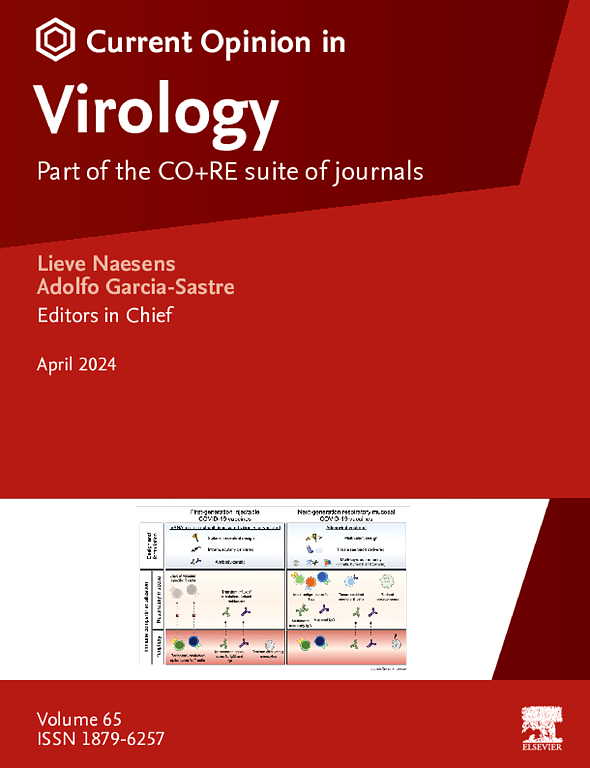人脑组织培养:一个独特的离体模型来揭示嗜神经虫媒病毒的发病机制
IF 5.1
2区 医学
Q1 VIROLOGY
引用次数: 0
摘要
虫媒病毒通过节肢动物传播,森林砍伐、气候变化和全球流动性加速了虫媒病毒从流行地区向非流行地区的传播。人感染虫媒病毒可导致从轻微到危及生命的症状,在严重病例中报告中枢神经系统功能受损。尽管其临床相关性,虫媒病毒导致神经功能障碍的机制仍然知之甚少。缺乏广泛的人类中枢神经系统模型来研究病毒-宿主相互作用,这对我们对这些机制的了解提出了挑战。在这种情况下,人脑衍生的离体模型具有保留人类大脑中发现的细胞多样性、细胞连接和组织细胞结构的优势,使它们成为阐明大脑疾病背后的细胞分子改变的有力策略。本文综述了近年来以离体人脑组织为实验模型获得嗜神经虫媒病毒的研究进展。本文章由计算机程序翻译,如有差异,请以英文原文为准。
Human brain tissue cultures: a unique ex vivo model to unravel the pathogenesis of neurotropic arboviruses
Arboviruses are transmitted by arthropods, and their spread from endemic to nonendemic regions has been accelerated by deforestation, climate change, and global mobility. Arbovirus infection in human results in symptoms ranging from mild to life-threatening, with the impairment of central nervous system functions being reported in severe cases. Despite its clinical relevance, the mechanisms by which arboviruses led to neural dysfunction are still poorly understood. The lack of a widespread human central nervous system model to study the virus–host interaction challenges the advance of our knowledge on these mechanisms. In this context, human brain-derived ex vivo models have the advantage of preserving cellular diversity, cell connections, and tissue cytoarchitecture found in human brain, raising them as a powerful strategy to elucidate the cellular-molecular alterations underlying brain diseases. Here, we review recent advances in the field of neurotropic arboviruses obtained using ex vivo human brain tissue as the experimental model.
求助全文
通过发布文献求助,成功后即可免费获取论文全文。
去求助
来源期刊

Current opinion in virology
VIROLOGY-
CiteScore
11.80
自引率
5.10%
发文量
76
审稿时长
83 days
期刊介绍:
Current Opinion in Virology (COVIRO) is a systematic review journal that aims to provide specialists with a unique and educational platform to keep up to date with the expanding volume of information published in the field of virology. It publishes 6 issues per year covering the following 11 sections, each of which is reviewed once a year: Emerging viruses: interspecies transmission; Viral immunology; Viral pathogenesis; Preventive and therapeutic vaccines; Antiviral strategies; Virus structure and expression; Animal models for viral diseases; Engineering for viral resistance; Viruses and cancer; Virus vector interactions. There is also a section that changes every year to reflect hot topics in the field.
 求助内容:
求助内容: 应助结果提醒方式:
应助结果提醒方式:


